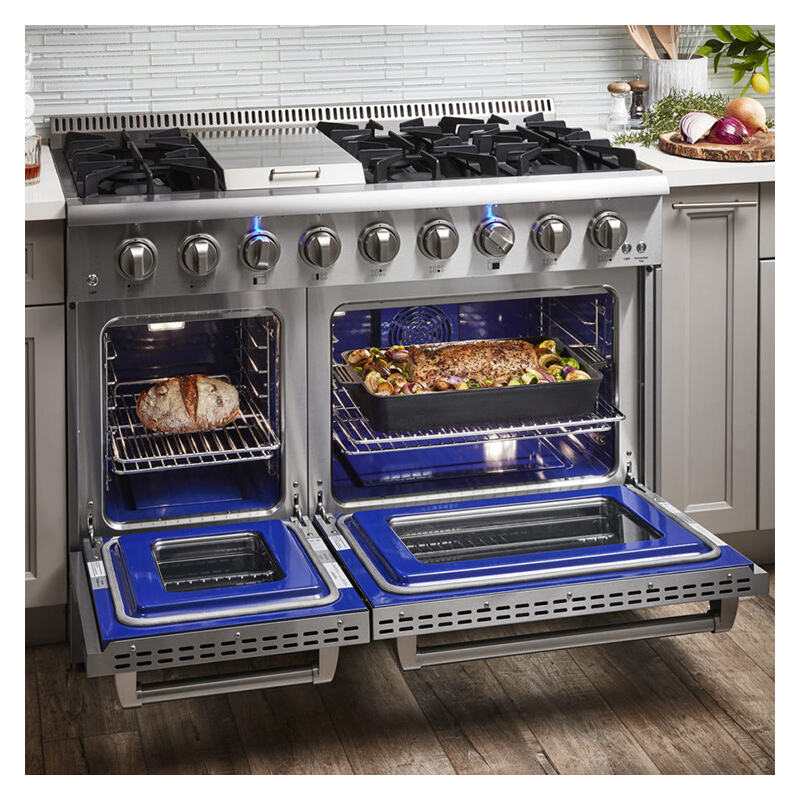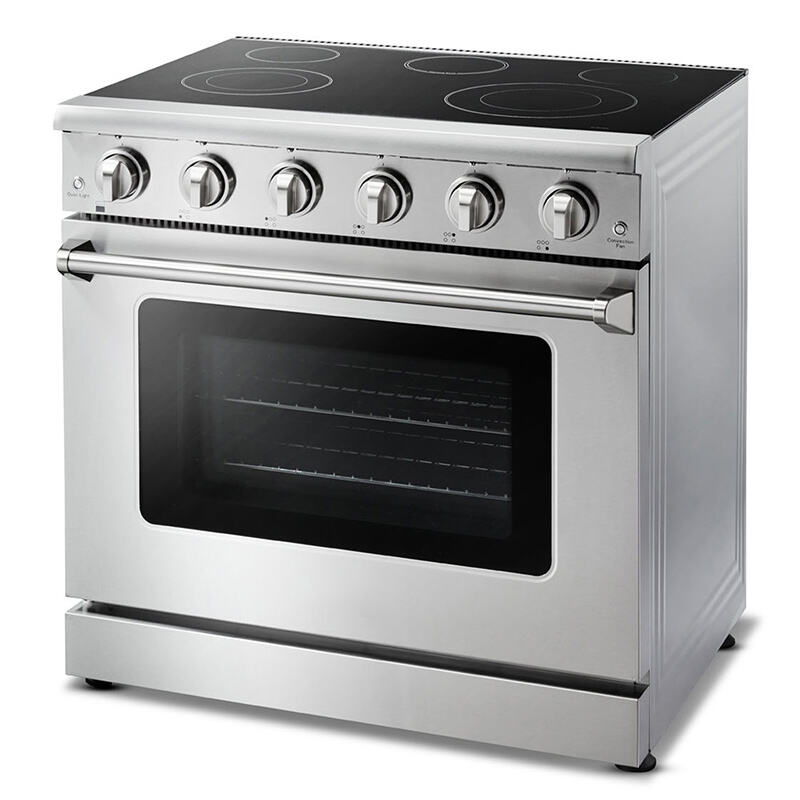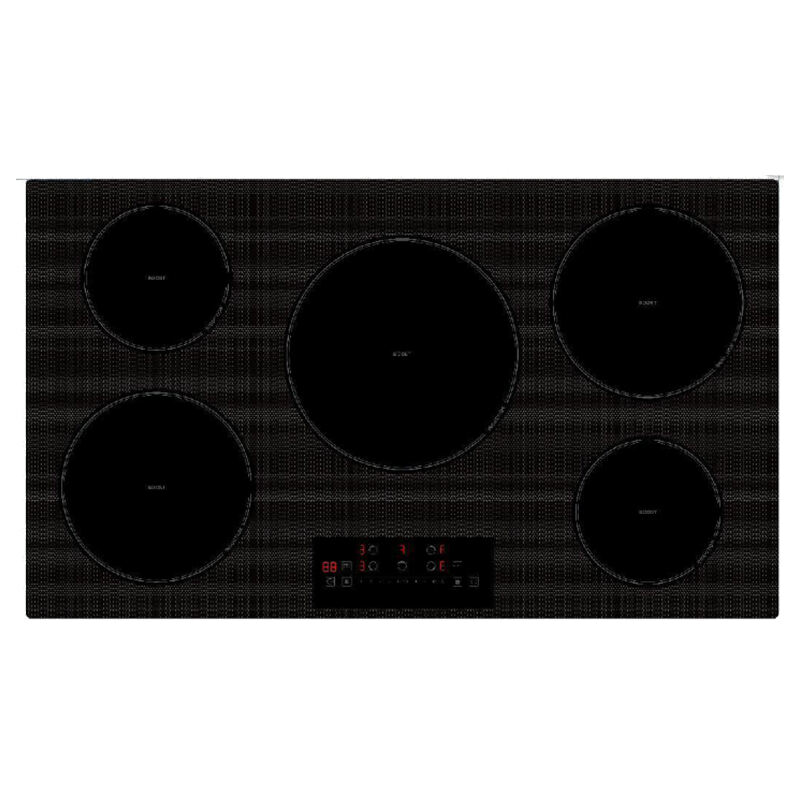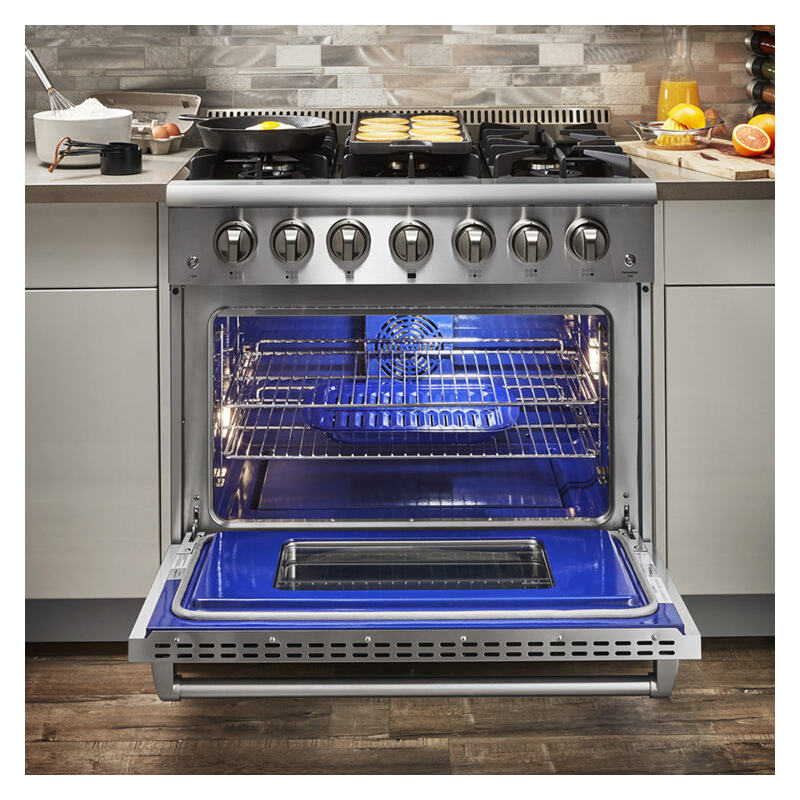Different Types of Stoves: A Comprehensive Guide
It is important to choose the right stove as it can affect how you cook, the amount of energy you use and the style of your kitchen. There are different types of stoves available, each with unique features to suit different cooking habits and living spaces. This simple guide aims to help you understand the types of stoves available and find the best one for your needs.
Different Types of Stoves: A Comprehensive Guide
Stove Selection Tips Based on User Needs
| Type of Stove | Description | Pros | Cons | Ideal For |
| Gas Stove | Uses natural gas or propane for cooking with open flames. | Precise heat control, quick temperature adjustments, efficient for frequent cooking. | Requires gas hookup; open flame needs caution around children. | Frequent home chefs or anyone wanting precise temperature control; best in homes with existing gas connections. |
| Induction Stove | Uses electromagnetic energy to directly heat pots and pans without heating the cooktop surface itself. | Very energy-efficient, fast heating, cool to the touch, safer. | Requires magnetic cookware, generally higher upfront cost. | Eco-conscious users, families with young children, and those looking for modern, energy-efficient options. |
| Ceramic Stove | Electric-powered stove with either coil or flat ceramic glass-top surface; provides even cooking temperatures. | Simple to use and clean, evenly distributed heating. | May heat and cool slowly, uses more electricity than gas. | Apartment dwellers, renters, and anyone looking for easy-to-maintain stoves that do not require gas. |
| Dual-Fuel Stove | Combines a gas cooktop for cooking and an electric oven for baking, offering the best of both worlds. | Versatile, precise gas cooking with electric baking. | Higher cost, more complex installation. | Dedicated home chefs who want flexibility in cooking styles and enjoy the combination of gas and electric features. |
Types of Stoves Explained
Each stove type has its own benefits and limitations. Here’s an overview to help you decide which one suits your cooking style and space best.
Gas Stoves

Description: Gas stoves use a natural gas or propane flame to cook food. They’re popular because they let you adjust the heat quickly and precisely, which is great for different cooking techniques.
Pros and Cons:
Pros: Precise heat control, quick temperature adjustments, and efficient for frequent cooking.
Cons: Requires a gas hookup, which some homes may not have, and has an open flame, which needs caution, especially around children.
User Recommendation: Best for those who cook often and want control over cooking temperatures. Ideal for homes that already have a natural gas connection.
Ceramic Stoves

Description: Ceramic stoves either have coils or smooth glass tops that heat up to cook your food. They’re convenient and don’t need a gas connection, making them a popular choice in many homes.
Pros and Cons:
Pros: Easy to install and use, with a flat surface that’s simple to clean. They also provide even heat distribution.
Cons: May take longer to heat up and cool down compared to gas, and can use more electricity.
User Recommendation: A good choice for casual cooks or renters who need easy maintenance and convenience without needing a gas connection.
Induction Stoves

Description: Induction stoves use electromagnetic energy to directly heat pots and pans. This type of stove is energyefficient and safe because the cooktop stays cool to the touch.
Pros and Cons:
Pros: Extremely energyefficient, fast heating, and the cooktop remains cool, making it safer.
Cons: Requires magnetic cookware and usually costs more upfront than other stoves.
User Recommendation: Great for ecoconscious families and those with young children. Ideal for modern kitchens and those looking for a safer, highefficiency option.

Description: Combines a gas cooktop with an electric oven, offering flexibility for different cooking styles.
Pros and Cons:
Pros: Offers versatility, with the precision of a gas cooktop and the even baking of an electric oven.
Cons: Often more expensive and complex to install.
User Recommendation: Ideal for dedicated home chefs who enjoy a variety of cooking methods.
Stove Selection Tips Based on User Needs
Everyone’s kitchen needs are unique, so here’s a guide to help you pick the best stove based on how you use your kitchen.
For Frequent Home Chefs
If you enjoy cooking every day or experimenting with recipes, gas and dual fuel hobs are excellent choices. These options offer precise heat control, allowing you to switch quickly between high and low temperatures, which is essential for certain cooking techniques. Gas cookers are the best choice for professional chefs because they are reliable and responsive. Dual fuel cookers are the most versatile option, offering a gas hob and electric oven.
For Ecoconscious Consumers
If you're looking for a sustainable option, Ceramic Stoves and Induction Stoves is the way to go. They're the most energy-efficient way to heat pots and pans, using minimal energy to heat the surrounding air.
For flat dwellers and renters
Flat living often means working with limited space and avoiding complicated installations. Induction Hob and Electric built-in oven are perfect for these setups. Induction Hobs are easy to clean and install, and Electric built-in Oven are compact, making them ideal for smaller kitchens. They are also safe and versatile for rental properties as they don't require gas pipework.
Frequently Asked Questions
Below are answers to some common questions about stove types to help you make a more informed decision:
What’s the Difference Between Induction and Electric Stoves?
- Induction stoves are faster and more energyefficient than traditional electric stoves because they heat cookware directly. Electric stoves, while slower, are more common and don’t require special cookware like induction models do.
Which Stoves Are the Most Budgetfriendly?
- Induction Hobs and Electric built-in oven often have lower initial costs and are generally easier to maintain. Electric built-in oven are the most affordable, making them ideal for temporary or smallspace solutions.
Which Stove Is Best for My Kitchen Environment?
- For small kitchens or apartments, electric or induction stoves are practical due to their compact designs and minimal ventilation requirements. Larger kitchens can accommodate gas stoves or dualfuel models if there’s enough space for proper ventilation.
Conclusion
Every stove type comes with unique benefits and drawbacks. Gas and dualfuel stoves are great for serious home chefs, while induction and woodburning stoves meet ecofriendly preferences. Electric stoves and portable options suit renters or those with smaller kitchens, and outdoor enthusiasts will find woodburning and portable stoves ideal for their needs.
Final Tips: When selecting a stove, think about your cooking frequency, the type of energy you want to use, and your available kitchen space. Balancing these considerations with your budget and cooking habits will help you make the best choice for your home.

 EN
EN
 AR
AR
 BG
BG
 HR
HR
 CS
CS
 DA
DA
 NL
NL
 FI
FI
 FR
FR
 DE
DE
 EL
EL
 IT
IT
 JA
JA
 KO
KO
 NO
NO
 PL
PL
 PT
PT
 RO
RO
 RU
RU
 ES
ES
 SV
SV
 TL
TL
 IW
IW
 ID
ID
 LV
LV
 LT
LT
 SR
SR
 SL
SL
 SQ
SQ
 HU
HU
 MT
MT
 TH
TH
 TR
TR
 FA
FA
 MS
MS
 GA
GA
 IS
IS
 HY
HY
 AZ
AZ
 KA
KA
